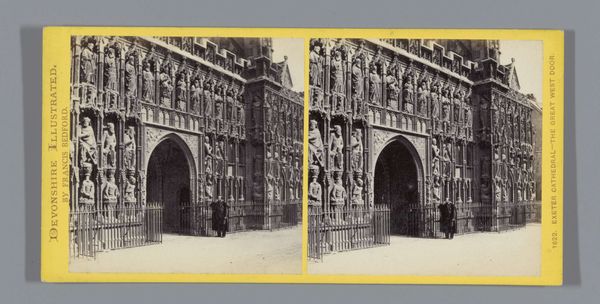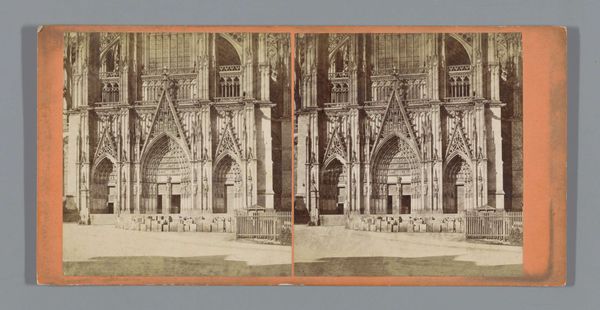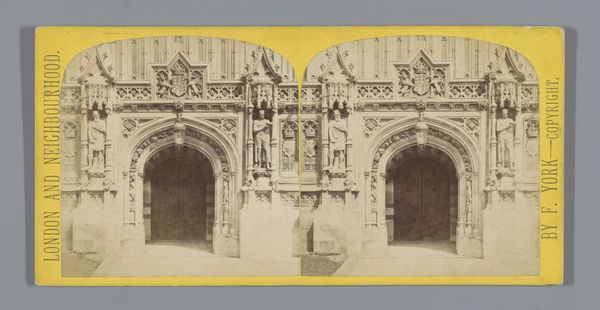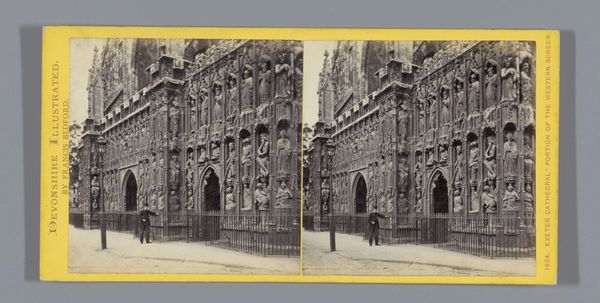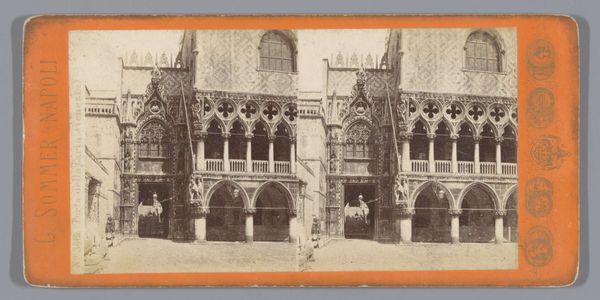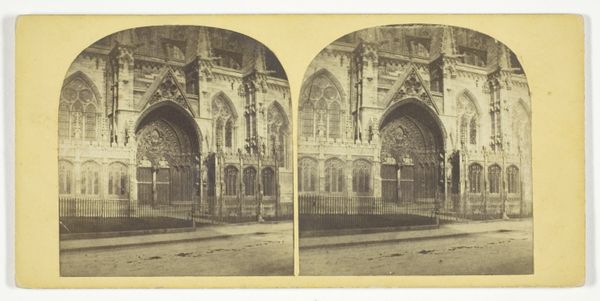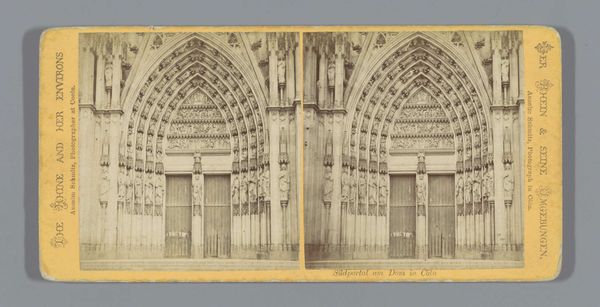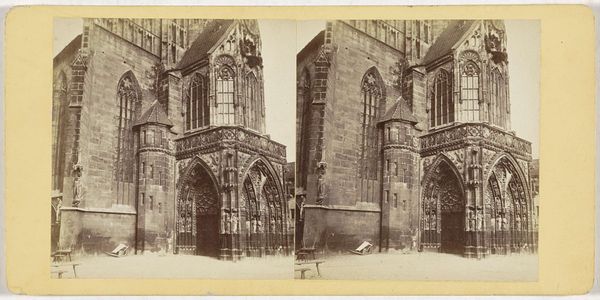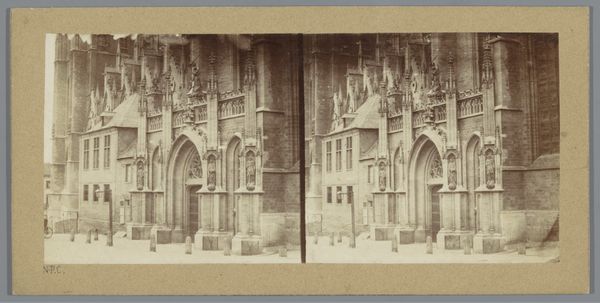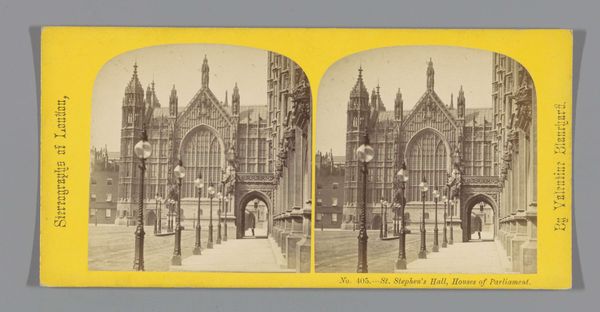
Dimensions: height 85 mm, width 170 mm
Copyright: Rijks Museum: Open Domain
Editor: So, this is "Portaal van de Kathedraal van Exeter," taken by Francis Bedford sometime between 1850 and 1880, a gelatin silver print. It’s amazing to see the scale and detail of the cathedral captured so early in photography's history, and you really get a sense of the place as a hub for transport from the included coach and figures. What can you tell me about it? Curator: Well, the process itself is fascinating. Think about what it meant to mobilize photography at this scale, the chemistry, the glass plates, and the logistics. This wasn't just about aesthetics; it was about accessibility, the dissemination of architectural marvels to a broader public through mass-produced images. The print becomes a commodity. How do you think the reproducibility affects the idea of "aura" here? Editor: That’s interesting, I hadn't considered the economic side. Does the material aspect—the gelatin silver print itself—hold any significance beyond being a means of reproduction? Curator: Absolutely. Consider the materials available to Bedford, and how that limits but also dictates his aesthetic choices. The textures achieved with gelatin silver, the tonal range, they all become part of the visual language, defining what architecture "should" look like when captured in print. It mediates our understanding of this specific architectural structure in the service of creating desire, in this case, travel or other consumption desires that the Cathedral is part of a circuit for. It moves beyond the mere informational to become cultural messaging and consumption practices. It’s the art object as a means of late-era colonial capital circulation and world building. Editor: So, it's not just a photograph *of* a cathedral, but an object that reflects the values and technological capabilities of the time? Curator: Precisely. Think about who had access to these images, who could afford them. How the consumption of these photographs informed ideas about class, progress, and Britain's place in the world. Editor: This reframes my entire perspective. I was focused on the aesthetic qualities and the historical record, and totally missed its circulation! Curator: Seeing art through the lens of production and consumption offers a completely different understanding, doesn’t it?
Comments
No comments
Be the first to comment and join the conversation on the ultimate creative platform.
